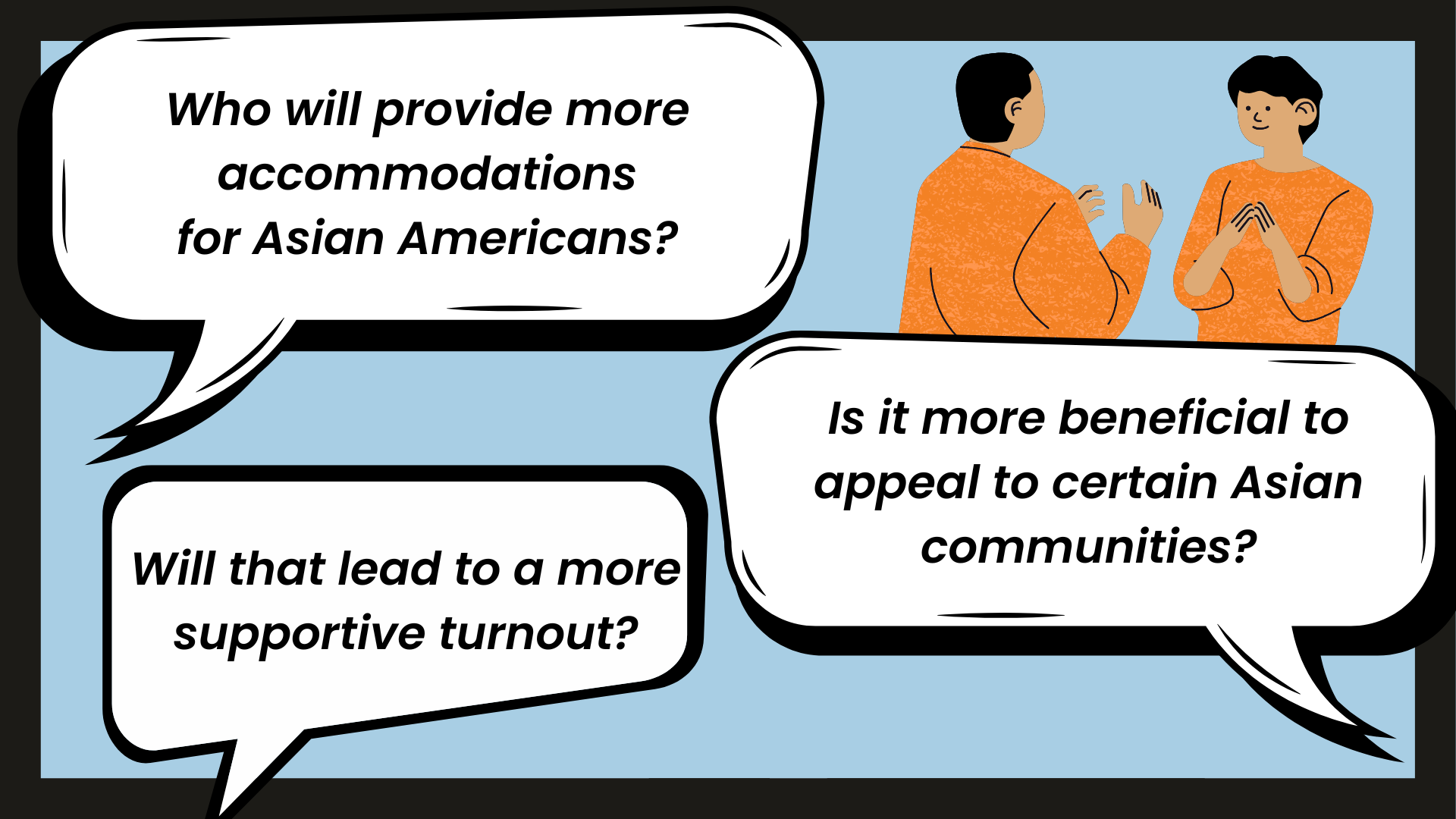With the last U.S. presidential ballots being tallied, former President Donald Trump has triumphed in the 2024 election against Vice President Kamala Harris. While his victory was an amalgamation of various factors, a notable occurrence in this election was the relatively large rise in minority voter support for the Republican party.
While the drastic rise in Latino support for Trump garnered plenty of attention, there is another group of minority voters that have also been slowly swinging from the Democrat to the Republican party for nearly a decade: Asian Americans.
In this election, Kamala Harris collected 54% of the Asian American vote, a 7% decrease from Biden’s 61% in 2020. Conversely, Trump accrued 39% of the Asian American vote in 2024, a 5% increase from 34% in 2020.
However, this trend is not new. In the 2016 presidential election, Hillary Clinton had 65% of the Asian American vote while Trump had 27%.
There are several potential reasons for this trend. For example, Asians Making America Great Again (AsiansMAGA), the largest grassroots Asian American PAC supporting President Trump, claims their work significantly boosted his appeal among Asian American voters. These efforts included hosting Asian-focused in-person and online rallies, purchasing billboards in swing states, and issuing voter guides in five major Asian languages. Such considerations allowed Trump to become more accessible to Asian American voters.
On another note, experts such as Trip Yang, a Democratic political strategist, told NBC News that he believes the Republican party’s stance on the economy was much stronger and appealing to Asian Americans, a community that owns over 3 million small businesses. Trump spent much of his campaign deploring the current state of the country’s economy, an issue that Asians seem to prioritize.
While it seems Asian Americans have been shifting towards the right over the past decade, there is still heavy speculation over the legitimacy of the data collected at exit polls. One prominent problem is the language barrier.
Voting booths and exit polls were lacking in translators for Asian languages, but APIA Vote, a nonpartisan nonprofit dedicated to engaging, educating, and empowering the AAPI community, found that 55.3% of AAPI voters speak a language other than English at home.
The lack of inclusivity and accommodation for Asian voters may discourage them from surveying the exit polls, which in turn can lead to biased results and an overall lack of representation in various states throughout the country.

Credit: Andrew Shingo Green and Julianne Le
Another consideration when observing this data is that not all Asian Americans vote the same. While the polls demonstrate a general direction, various Asian groups vote in different directions. For example, a 2023 Pew Research Center survey found that 68% of Filipino voters, 68% of Indian voters, and 67% of Korean voters were Democratic. On the other hand, 56% of Chinese voters are Democratic and only 42% of Vietnamese voters are Democratic.
In an alternative perspective, Japanese American voter turnout for the 2020 presidential election was about 83% while Vietnamese American turnout was about 53%. It can be difficult to find a correlation in voting behavior between different Asian American subgroups, making them a unique community at the polls and a population that garners further attention and research.
The 2024 presidential election illustrates that Asian American voters are increasingly leaning Republican, challenging previous assumptions about their overall partisan loyalty. Both parties may even need to begin reevaluating how they connect with the Asian American community for future campaigns.
While the exit polls are not necessarily indicative of the future, they nonetheless provide valuable insight into the voting behavior and trends of Asian Americans. This data will become more important as time goes on since Asian Americans continue to be the fastest-growing group of voters in America.
Visual Credit:
Feature Image: Photos modified by Andrew Shingo Green (Left – Cato Institute, licensed under CC BY-NC-SA 4.0; Right – Gage Skidmore, licensed under CC BY-SA 2.0)
Graphic: Andrew Shingo Green & Julianne Le

Comments are closed.